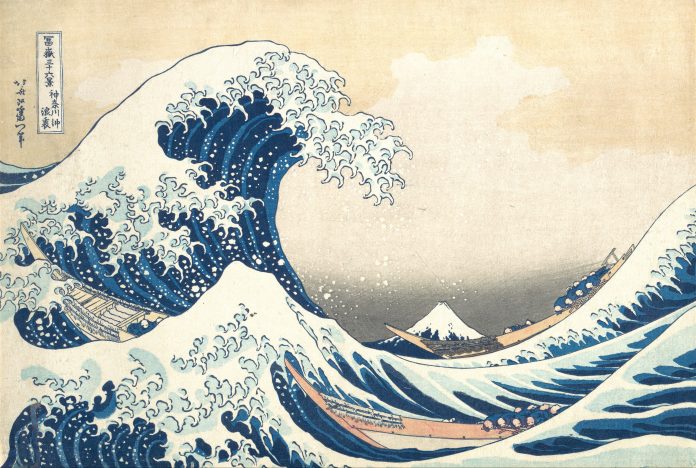by InTrieste
The Civic Museum of Oriental Art in Trieste is launching a fresh, immersive experience titled “Journey into the Floating World,” a new exhibit designed to captivate visitors with the rich traditions of Japanese art and culture. The exhibit, which introduces new colors and redesigned layouts across multiple floors, offers a modern showcase of the museum’s most iconic treasures—foremost among them, Katsushika Hokusai’s world-renowned The Great Wave off Kanagawa.
To celebrate the opening of this expansive tour, the museum is hosting a series of four free guided tours, beginning on Thursday, September 26, at 5 p.m. The tours will continue on October 3, October 10, and October 12, offering a closer look at the newly revamped displays, with a focus on both the art and the museum’s recent renovations. Attendance is limited, but the experience promises to be a rare and intimate opportunity to explore Japanese cultural heritage.
A Journey into Japan’s Art and Nature
The new exhibit spans three floors and presents a deep dive into the world of ukiyo-e (images of the floating world), a genre of Japanese woodblock prints that flourished from the 17th to 19th centuries. Divided into three thematic sections—famous places (meishoe), depictions of beauties (bijinga), and actor prints (yakushae)—the exhibit gives visitors a broad view of Japan’s natural beauty, cultural richness, and evolving artistic traditions.
The journey begins on the ground floor, where visitors are introduced to meishoe, or landscape illustrations. These prints traditionally depict iconic Japanese pilgrimage sites, dramatic natural scenery, and locations associated with poetry and legend. Utagawa Hiroshige, a master of this genre, is prominently featured. His landscape prints—beloved by Western artists like Vincent Van Gogh and Claude Monet—convey an ethereal yet profound view of nature, with a unique ability to evoke both the grandeur and the spiritual essence of the Japanese landscape.
The highlight of the exhibit, however, is a room on the second floor dedicated entirely to Hokusai. Often regarded as the father of landscape art in Japan, Hokusai’s work seamlessly blends Western perspective techniques with Eastern aesthetic principles. His celebrated series Thirty-Six Views of Mount Fuji, produced in the 1830s, is a centerpiece of the exhibit, where the mountain—long revered in Japanese culture—serves as a powerful symbol of nature’s unity with humanity.
Exploring Beauty and the World of Kabuki
The second floor also houses a newly designed central hall, featuring prints of Japan’s most famous beauties (bijinga). These elegant works include some of the oldest prints in the museum’s collection, such as pieces by Suzuki Harunobu and Kitagawa Utamaro, dating back to the late 18th century. These prints highlight the shifting portrayal of women in Japanese art, moving from highly stylized and idealized forms to more intimate and relatable representations of women in everyday life.
On the third floor, the exhibit turns its focus to Japanese theater, specifically Kabuki, with a series of prints that offer insight into this traditional form of dramatic performance. A key attraction is the display of three prints by Utagawa Kunikiyo II, which depict scenes from Kanadehon Chūshingura, one of Japan’s most famous historical dramas. This play, based on the true story of 47 samurai who avenged the wrongful death of their lord, continues to resonate with audiences around the world, including inspiring Western filmmakers.
A Museum Reimagined
The exhibit is not just a celebration of Japanese art, but also of the museum’s own transformation. Recent renovations on the ground floor have reshaped the visitor experience, introducing a new color scheme that draws from both Chinese and Japanese artistic traditions. These changes reflect a broader commitment by the museum to offer dynamic and evolving cultural programming, ensuring that each visit is fresh and stimulating for new and returning visitors alike.
“Journey into the Floating World” will remain open until October 20, 2024, with free admission. The exhibit can be explored Monday through Sunday from 10 a.m. to 5 p.m., except Wednesdays, when the museum is closed.
For those who want a deeper understanding of Japanese art and its evolution through the centuries, these guided tours promise to offer both cultural enrichment and aesthetic pleasure. With spaces limited, visitors are encouraged to book early to secure a place in this cultural voyage.
Contact Information
Civic Museum of Oriental Art
Via San Sebastiano 1, Trieste
Phone: +39 040 3220736 / +39 040 6757175
Email: museoarteorientaletrieste@comune.trieste.it
Website: museoarteorientaletrieste.it





























